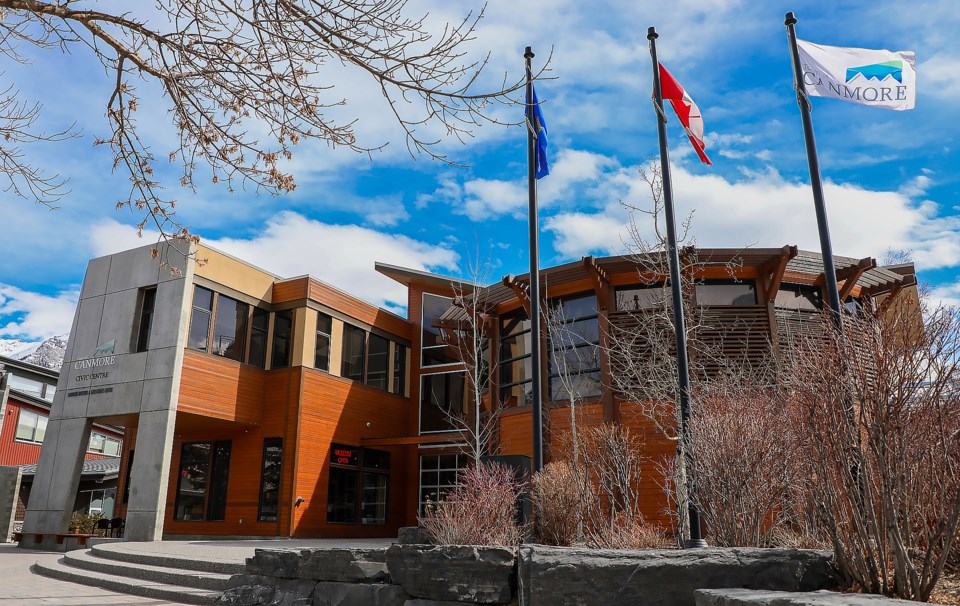CANMORE – An affordability program started by the Town of Canmore has seen an uptick in people using the service since a two-tiered system for income eligibility was brought in last year.
The Town’s affordable services program had 865 participants as of mid-November, with 112 part of the newly established tier.
“The intention was to provide people who were trying to make Canmore their home the opportunity to do so by reaching two outcomes,” said Canmore’s Family and Community Support Services (FCSS) supervisor Tara Gilchrist at the Jan. 23 committee of the whole meeting.
“One, by being able to better reach their monthly expenses by the supports and services offered by the program. Two, that they were better able to connect in the community and participate and have relationships and connection with people due to the services we were going to be able to support them with.”
According to a staff report, there are 60 approved Tier 2 applicants that represent 112 community members. It added that based on 2021 Statistics Canada census data it could grow to about 100 applicants. Tier 1 had 457 applicants and 753 people, as of Nov. 15, 2023.
The change in the program came last May and involved evaluating data from the program between 2017-20, Gilchrist said, and having heard from higher-income people in Canmore that they weren’t eligible but still had a need.
“In some cases, (people were) finding themselves having more affordability challenges than some of the incredibly low-income people who were able to access a number of things like social housing,” she said.
Before the changes, an individual making $33,977 or less a year and a family of two or more with a combined income less than $67,953 were eligible for the program.
The two-tiered changes had a Tier 1 individual be eligible if they earned $35,846 a year or less, while a Tier 2 was $52,950. A family of two with no kids were $53,904 at Tier 1 and $67,953 for Tier 2, with a family of two including a child at $71,962 for Tier 1 and $89,485 at Tier 2.
Tier 1 rose to $77,257 for a family of three, $82,552 for a family of four and a family of five is $87,847. At the Tier 2 level, a family of three is $94, 901, a family of four is $96,369 and $100,000 for a family of five.
“The addition of income consideration based on family size has allowed 10 additional families to access Tier 1 supports and six families to access Tier 2 supports,” stated the staff report.
Gilchrist said the two-tiered program originally had a slow uptake, but began to increase last fall. She noted the bulk of affordability issues are housing-related.
“I think that’s part of the challenge of promoting, people may see affordable programs and they start to think ‘I wouldn’t qualify’ … Eventually through word of mouth, people can find out there’s a little bit of relief that goes a long way,” said Mayor Sean Krausert.
The report highlighted the most used service was memberships at Elevation Place, where Tier 1 people get a 67 per cent discount and 35 per cent for Tier 2. During the first six months of the two-tiered system, 40 people in Tier 2 have a membership. Of those, 29 are new and 11 switched from full membership to the discounted rate.
“Assuming each of the 11 applicants that moved from a full price membership were paying for an individual membership, the inclusion of Tier 2 participants nets approximately $1,300 per month in membership fees,” according to the report.
For programs on the affordable services side, Elevation Place membership had a usage rate of 97 per cent, while artsPlace was 53 per cent, Roam local and regional transit 47 per cent, FCSS services such as volunteer income tax program at 43 per cent and Canmore Eagles tickets at 37 per cent.
The Eagles provide 12 free tickets for each home game, which are “quickly subscribed to and vastly coveted.”
The highest use for recommended community offerings was 53 per cent for the Canmore Public Library, 43 per cent for Canmore Food Rescue, 30 per cent for each of KidSport and Food and Friends and 27 per cent for the Job Resource Centre.
The affordability program was approved by council in 2016, then started as a six-month pilot program in 2017 and had an official full-time program launch in the same year.
An initiative to grow the business and community organization partnership began in July. It looks to add businesses and community groups that offer discounts.
The report noted 10 partners have been added since July to bring it to 21 taking part in fields such as fitness and wellness providers, arts and entertainment organizations, restaurants and retail businesses. Those taking part receive a decal to put on their business storefront to identify them as part of the service.
Gilchrist said the next step is to look at what other communities do and look at potential opportunities, particularly with grocery stores.
The report stated 60 per cent of participants were Canadian citizens, with permanent residents and people having closed work permits each making up 20 per cent.
It further added 70 per cent of participants had been in Canmore for five or fewer years, with 13 per cent having lived in the community between six and 14 years and 17 per cent have been here for 15 years or more.
“We continue to have 17 per cent of folks who have been in the valley for more than 15 years. That does speak to the quality of the community and people who want to stay and continue to look for ways and methods to make it successful for them to be able to be here.”




